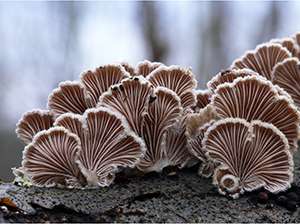Researchers expose 'hidden layers' in fungi

If we are to tame fungi and optimize their extremely important role in our ecosystem, we must gain a more complete view of their functional abilities. Researchers from TU Delft and Utrecht University have exposed a previously hidden layer of functional complexity in fungi. They publish their findings on Friday September 23th in Scientific Reports.
Beer and antibiotics
'Fungi brew our beer and produce important antibiotics. They feed us as mushrooms and will someday maybe clothe us. As organic material recyclers they maintain a healthy soil for our crops, and produce bio ethanol. Yet, they endanger our health as pathogens and threaten our food security. In order to optimally exploit (or combat) fungi in the various environments in which we encounter them, we require a complete view of their functional repertoire', says prof. Marcel Reinders of TU Delft Bioinformatics Lab.
Alternative splicing
Alternative splicing is a process in the cell whereby a single gene can produce multiple protein products, each with different functions. The wealth of additional functional components introduced by alternative splicing increases the complexity and functionality of the genome. 'In humans and mice, aberrant alternative splicing, or mutations in such alternative products have been linked to cancer, autism and severe developmental disorders. Despite this impressive impact in mammals, alternative splicing in fungi is largely unexplored', says Reinders.
Taming fungi
To fill this gap in knowledge, researchers at TU Delft and Utrecht University have investigated the functional impact of alternative splicing products in the model fungus, Schizophyllum commune. They find evidence for thousands of additional products, more than has been observed in any other studied fungus. These alternative products are predicted to function as important regulators and nutrient processing genes. Prof. Han Wosten of Utrecht University: 'Knowing which products perform exactly which role will provide key insights into the relationship of the organism with its environment. With the outcome of our study, we discovered a rich reportoire of functional flexibility that a fungus like Schizophyllum commune has at its disposal. This opens whole new possibilities for application of fungi in biotechnology.'
More information: Thies Gehrmann et al. Schizophyllum commune has an extensive and functional alternative splicing repertoire, Scientific Reports (2016). DOI: 10.1038/srep33640
Journal information: Scientific Reports
Provided by Delft University of Technology


















